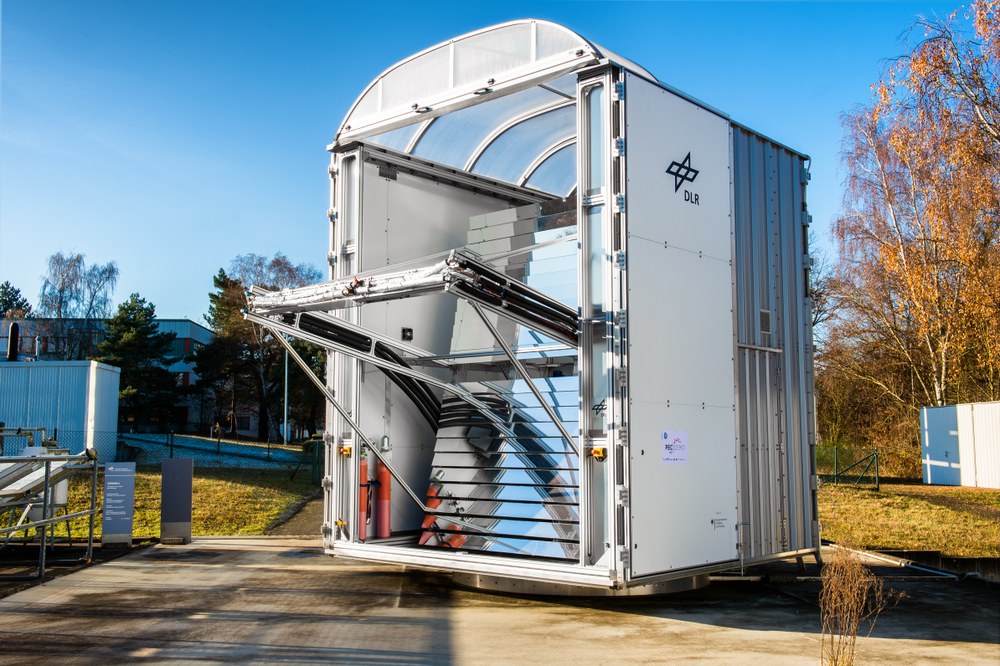SoCRatus

Broad focus – The SoCRatus (Solar Concentrator with a Rectangular Flat Focus) test stand enables the experimental investigation of photocatalytic and photoelectrochemical systems as well as other systems and components, such as photovoltaic cells, under concentrated solar radiation.
Test stand for the experimental investigation of photocatalytic and photoelectrochemical systems in particular with concentrated sunlight
The concentrator, which consists of 22 flat aluminium mirror facets and is tracked on two axes, directs the incident solar radiation onto a rectangular focal area. The concentrator was designed in such a way that the radiation in the focal plane achieves a very uniform flux density distribution over an area of 2500 mm x 100 mm. Solar reactors, such as suspension reactors or photoelectrochemical cells, and other objects such as photovoltaic cells, whose properties are to be analysed under concentrated solar radiation, can be tested here.
The output of the concentrator can be reduced if necessary by covering individual facets. If all facets are used, they concentrate the solar radiation by a factor of 17.5.
Other features of the SoCRatus:
- High tracking accuracy: deviation is less than 0.1 degrees.
- Angular range with respect to the solar azimuth angle: -100 to 100 degrees.
- Angular range with respect to the solar elevation angle: 10 to 62.6 degrees.
- Aperture area: 8.8 m2.
- Nominal distance between focal plane and facets: 2500 mm.
- High reflectivity of the facets even in the ultraviolet (UV) range of solar radiation.
- Maximum nominal angle of incidence on the focal plane: 36.6 degrees.
- Typical relative standard deviation of the radiant flux density in the focal plane: 2.4 per cent.
A spectrometer records the spectral radiant flux density in the focal plane in the wavelength range from 250 to 850 nanometres. The intensity of the direct solar radiation is measured with a pyrheliometer attached to the concentrator structure.

Four identical fluid circuits are available for the flow through of reactors. In each of these circuits, fluid consisting of water and an electrolyte as well as any suspended photocatalyst particles and other substances is conveyed from a storage tank to the reactors. To set certain temperatures, the mixture is passed through a heat exchanger before entering the reactor, to which a temperature control unit with a heating and cooling capacity of 5 kilowatts is connected.
The gas produced by photocatalytic or photoelectrochemical reactions is analysed using a micro gas chromatograph with regard to possible proportions of hydrogen (H2), oxygen (O2), nitrogen (N2), methane (CH4), carbon monoxide (CO) and carbon dioxide (CO2) as well as other components as required. The quantity of gases produced, in particular the energy carrier hydrogen, and the spectrally recorded radiant power injected provide information about the properties, such as efficiency and stability, of the systems analysed.
In addition to using concentrated solar radiation in the focal plane, it is also possible to test reactors with non-concentrated solar radiation. In this case, these are attached to the concentrator structure and tracked (two-axis/single-axis) or held in a defined position, depending on the specification.
The development of the test stand was funded by the Federal Ministry of Education and Research as part of the HyCats project.
